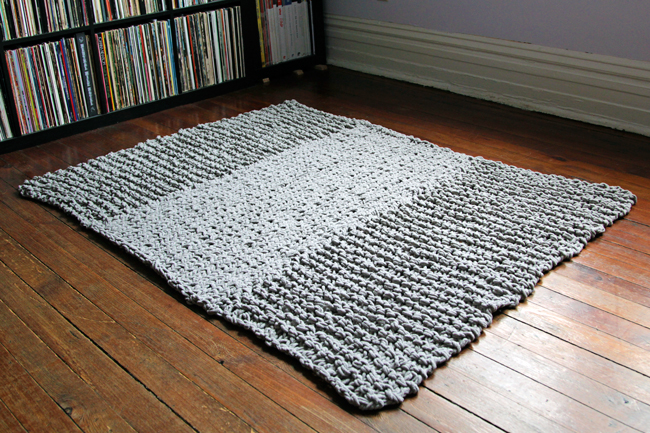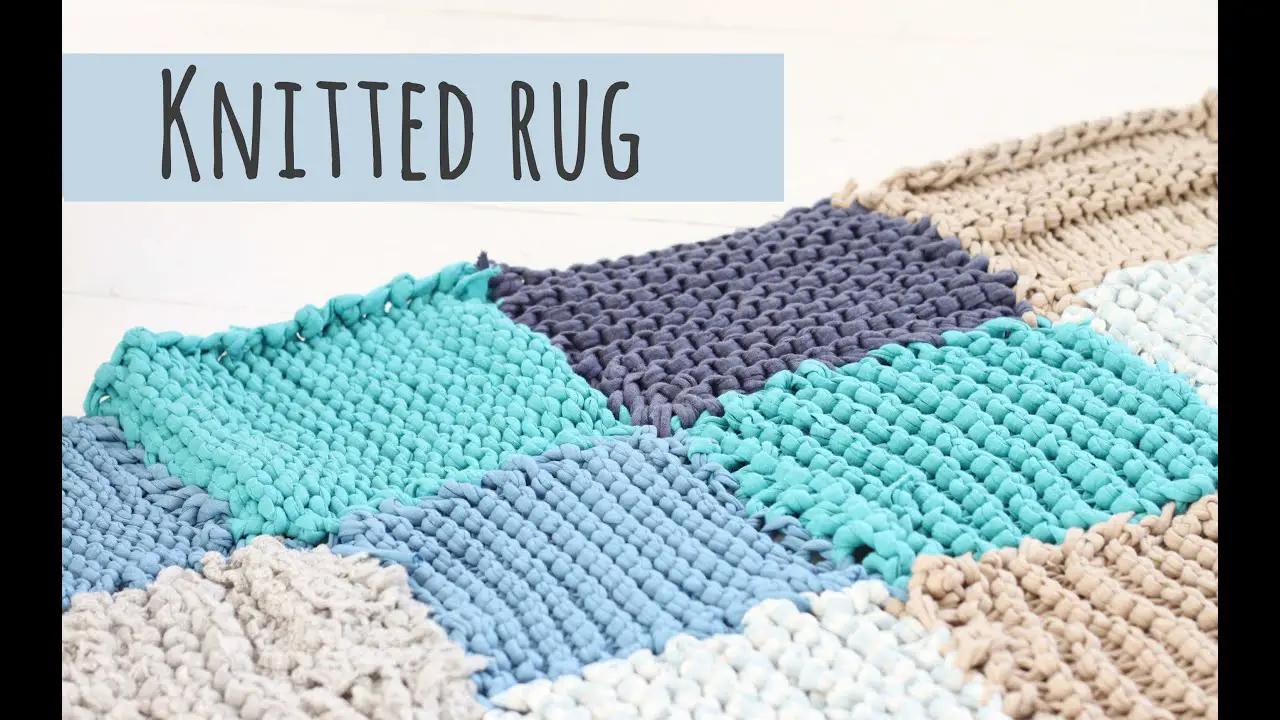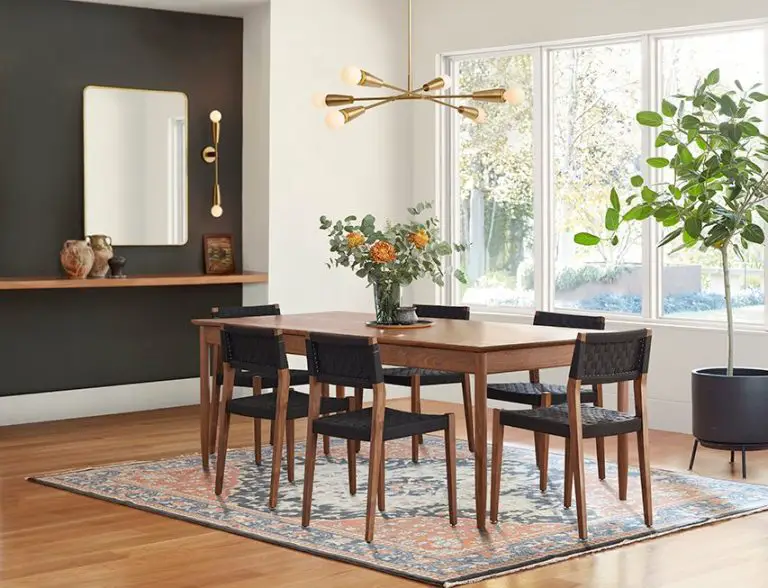How To Knit A Rug
Knitting a rug is a great way to add a unique element of warmth to any room. Not only is it a fun and creative activity to do, but it is also a great way to upcycle materials and create a beautiful and functional piece of home décor. With a few simple supplies and some basic knitting knowledge, you can create a one-of-a-kind rug that will last for years to come. Follow these steps to learn how to knit a rug of your own.

Gather Supplies
Knitting a rug requires more than just yarn and needles – before you start, it is important to make sure you have all the right materials. Start by gathering the necessary supplies, like a large wooden or plastic circular needle, a heavy-weight yarn, and a crochet hook if desired. You will also need scissors, a measuring tape, and a tapestry needle. If you will be using multiple colors of yarn, make sure to have at least one skein of each color. Additionally, you may want to purchase a pattern or use a pre-made template for inspiration. With all the necessary supplies in hand, you are now ready to start your rug knitting project!
Select a Pattern
When it comes to knitting a rug, selecting the right pattern is key. A well-crafted pattern will be both aesthetically pleasing and easy to follow. It will also help you create a rug that will last for years to come. With so many different types of patterns available, it can be difficult to decide which one is the best choice for your project. Here are some tips to help you select the perfect rug pattern for your knitting project.
Start by considering the size of the rug you want to make. Different rug patterns come in a variety of sizes, so make sure to choose a pattern that fits the size of the rug you have in mind. You should also consider the level of difficulty of the pattern. If you’re just starting out with knitting, you may want to start with a simpler pattern that won’t require too much time and effort.
Next, consider the type of material you’ll be using. Different types of yarns can be used to create different looks and styles. Think about the texture and color of the yarn and pick a pattern that will best showcase it.
Finally, look for patterns that come with detailed instructions. Not all patterns come with detailed step-by-step instructions, so make sure to select a pattern with instructions that you can easily follow. If you’re looking for a more challenging pattern, look for one with clear diagrams and illustrations to help you along.
These are just a few tips to help you find the perfect rug pattern for your knitting project. With patience and practice, you’ll soon be able to create a beautiful, durable rug that will be the envy of your friends and family.
Learn About Knitting Basics
Knitting is a centuries-old craft that has remained popular among hobbyists and artisans alike. Whether you’re a beginner or a seasoned knitter, there’s always something new to learn. Creating a rug is a great way to up your knitting game. It’s a great project to tackle if you’re looking to practice your skills and create a beautiful heirloom. To get started, it’s important to understand the basics of knitting. From selecting the right yarn and needles to learning how to cast on and bind off, these fundamentals will help you create a stunning knitted rug. Once you’ve mastered the basics, you can explore different types of stitches and textures to create a unique and eye-catching rug. With a little bit of practice and patience, you’ll be able to create a cozy and stylish addition to your home.
Cast On
Knitting a rug is a great way to add a bit of cozy warmth to any room. When starting out, it’s important to begin by casting on your stitches. In order to do this, you’ll need to secure your yarn to the needle. This is done by creating a slip knot loop and then placing it on the needle. After this, you’ll need to begin casting on the stitches. This is done by looping the yarn around the needle from the back to the front of the needle and then pulling it through the loop that’s already on the needle. As you continue to do this, you’ll be adding more and more stitches to your needle. Once you’ve reached the required number of stitches, you’ll be ready to move on to the next step in knitting your rug. With the right techniques and a bit of patience, you’ll soon be able to create a beautiful, handmade rug.
Follow the Pattern
For aspiring knitters looking for an exciting challenge, creating a rug is the perfect project. But, taking on a project of this size can be daunting. To ensure success, following a pattern is essential. To begin, find a pattern that suits your skill level and knitting style. Consider what type of yarn you’d like to use, as well as the colors. When you’ve settled on a pattern, it’s time to start knitting. When you’re ready, read the pattern instructions thoroughly and measure your gauge. This will help you ensure that your rug turns out the correct size. As you knit, pay close attention to the pattern and take your time. When you make a mistake, don’t be discouraged—just take it out and start again. With patience and practice, you’ll be able to knit a beautiful rug that you can enjoy for years to come.
Make Edging and Finishing Touches
Having created the main body of your rug, you can now make the edging and finishing touches. This is an important step to ensure your rug looks neat and professional. To make the edging, you will need to pick up the loops from the edge of your rug and knit them together. You can use the same stitch pattern for the edging as you used for the main body of the rug, or you can switch to a different pattern. If you are switching to a different pattern, make sure to adjust the tension of your knitting to accommodate the new pattern. To finish the rug, you can add a fringe along the edges, or you can create a simple border using a contrasting color. After that, your rug is complete! With proper care and maintenance, your handmade rug will last for years.
Block Your Rug
Knitting a rug is a fun and rewarding project that anyone can do. To ensure that your rug looks professional and lasts a long time, it is important to block it before you are finished. Blocking is the process of stretching and shaping the rug to the desired size and shape. This article will explain the steps needed to block your rug.
First, you will need to lay out the rug and pin it to your blocking board. This will provide a secure and stable surface on which to block your rug. You should use rust-proof T-pins to pin the rug and ensure that the pins are evenly spaced. Once the rug is pinned, use a spray bottle filled with water to dampen the rug. This will help the fibers relax and stretch into their proper shape.
Next, use a measuring tape to measure the rug’s length and width. You can then use these measurements to draw the desired shape of your rug on the blocking board. Once the shape is drawn, use the pins to stretch the rug to fit the shape. Make sure to stretch the rug evenly so that there are no wrinkles or bumps.
Finally, leave the rug to dry and let the fibers settle into their new shape. Once the rug is completely dry, you can unpin it from the blocking board. Once unpinned, your rug is ready to be enjoyed and admired!
Add Embellishments
Knitting a rug can be a creative and fun way to bring your designs to life. To make it even more unique, why not add some embellishments? Embellishments can come in many forms, from buttons and sequins to pom-poms and beads. You can use them to add texture and dimension to your rug, making it truly one-of-a-kind.
When adding embellishments, make sure you use the right kind of yarn and needle. Some embellishments require a special yarn or needle, so it’s important to make sure you have the right supplies before you start. Once you have the right supplies, you can begin adding the embellishments. They can be added in various patterns, grouped together, or even arranged in a specific shape.
Once you’ve added the embellishments, you’ll want to secure them in place. This can be done by stitching them onto the rug or sewing them in with a needle and thread. This will help ensure that the embellishments stay in place and won’t fall off after the rug is complete.
Embellishing your rug can be a great way to add a unique touch to your project. Whether you’re going for something subtle or something bold, adding embellishments can help take your design to the next level. With the right supplies and a bit of creativity, you can create a beautiful and one-of-a-kind rug that will add a special touch to any room.
Care for Your Rug
Caring for a handmade rug is not difficult, but it does require being aware of certain considerations. If the rug is made from natural materials such as wool, cotton, or jute, the rug should be vacuumed regularly to remove dirt and dust. Spot cleaning with a spot cleaner is also recommended. Additionally, it is important to rotate the rug to ensure even wear. If the rug is made of synthetic materials, it can be machine-washed or spot-cleaned with a mild detergent. After cleaning, be sure to hang the rug to air dry. Protecting the rug from direct sunlight and extreme temperatures will help ensure its longevity. Lastly, if your rug has a fringe, be sure to trim it regularly to remove loose fibers and prevent the fringe from unraveling. With proper care, your handmade rug can last for years.
Creative Variations
Knitting rugs is a great way to express your creativity and make something unique. Whether you’re an experienced knitter or a beginner, there are many ways to experiment with this craft. From colorful yarns to different stitch patterns, the possibilities are endless. Here are some creative variations you can try when knitting a rug.
Try using a variety of colors and textures when knitting a rug. Combine different yarns to create a multi-dimensional look, or use a single color for a more subtle effect. You can also add additional elements such as tassels, pompoms, and fringe to give your rug a personal touch.
Experimenting with stitch patterns can add visual interest to your rug. Try using basic garter, seed, or stockinette stitches, or go for more complex ones such as cables, lace, or Bobble stitch. You can also combine different stitch patterns to create a unique design.
Knitting rugs can also be a great way to repurpose old materials. If you have some scraps of yarn lying around, why not put them to use and create something new? Repurposing old materials can also add a bit of character and nostalgia to your rug.
Knitting a rug is an excellent way to express your creativity and make something truly unique. With a few creative variations, you can make a one-of-a-kind rug that reflects your individual style. So get creative and have fun!
Troubleshooting Common Issues
Knitting a rug can be a rewarding experience. However, there are a few common issues that can occur during the process. Knowing how to troubleshoot these issues can take your rug from a potential disaster to a stunning centerpiece. Here are some of the most common problems and how to fix them:
- Loose stitches: If the rug is starting to look a bit saggy, take a look at the stitches. They may need to be tightened. Use a needle to tighten the yarn and pull it through the stitches.
- Incorrect gauge: It’s important to check the gauge of the yarn and ensure that it’s what the pattern calls for. If it’s not, it can lead to a rug that’s too big or too small.
- Incorrect stitch pattern: If the rug isn’t looking the way it should take a look at the stitch pattern. It may need to be adjusted to get the desired effect.
- Dropped stitches: Dropped stitches can lead to tears in the rug. To fix this, pick up the dropped stitch and pass it over the one that’s next to it. This will make sure the stitch remains in place.
By following these tips and tricks, you can get your rug looking great in no time. With a bit of practice and patience, you’ll be able to create beautiful rugs that will last for years to come.
FAQs About the How To Knit A Rug
What type of yarn should I use for knitting a rug?
Answer: You should use a bulky yarn for a rug that is thick and durable.
How many stitches do I need to cast on for a rug?
Answer: You will need to cast on at least 200 stitches (depending on the size of your rug) to create a good foundation.
How long will it take to knit a rug?
Answer: This depends on the size of the rug and the complexity of the pattern. Generally, it can take anywhere from a few days to a few weeks to complete a rug.
Conclusion
Knitting a rug is a fun and rewarding way to add a unique touch to your home decor. It can be done with a variety of yarns and textures, and the finished product will be a unique item that will last for years. With the right materials and a bit of patience, you can create a beautiful and practical rug that will enhance any room. With a little practice and creativity, you can make a rug that will be the envy of all your friends.







